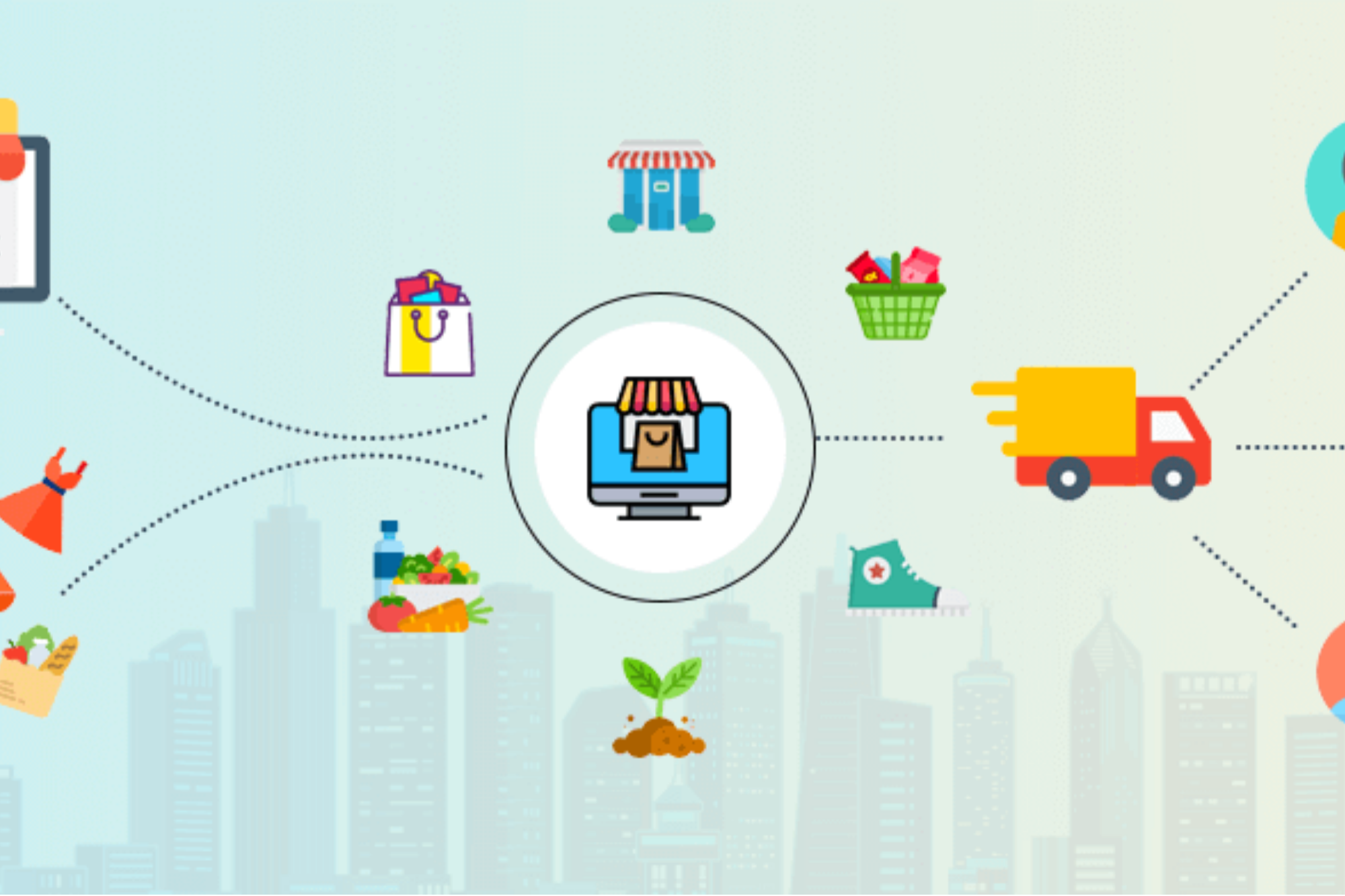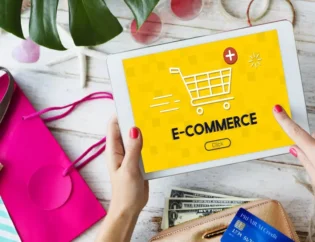
Read Time: 6 mins 4 secs
Digital Commerce
Excerpt: Since the pandemic hyperlocal delivery became very prevalent with changing customer behaviour. In this article, we will have a quick look at the challenges of hyperlocal delivery and how technologies are changing its landscape of it.
Our way of life has changed dramatically as a result of the pandemic. Businesses in all industries were affected by the outbreak and ensuing lockdowns. Businesses have resumed operations and are formulating plans to recoup from the pandemic’s wrath as the economy progressively reopens, however with working models that prioritise safety.
The path to recovery for the country’s e-commerce logistics market has been a little bumpy, but the industry has gained a lot of impetus in recent months thanks to innovative solutions powered by new technologies. When we look at the e-commerce logistics segment more closely, it becomes clear that the hyperlocal market, despite its growing appeal among customers and sellers, has been suffering considerable hurdles. Several factors contribute to these difficulties, including a mainly unstructured market, among others. Here’s a rundown of the barriers encountered in the hyperlocal delivery business during the crisis to help you understand more.
Challenges of Hyperlocal Deliveries During Pandemic
- Sourcing Problem

During the pandemic, procurement and inventories were major issues. Sourcing components, labour, and keeping track of inventories has become challenging as the new normal sets in and social distancing norms influence supply chain operations. Every business has been losing money while dealing with the crisis, and several domains have suffered as a result.
The task of addressing sourcing difficulties while meeting rising consumer demand is puzzling. Organizations in a variety of industries, on the other hand, can use innovative last-mile delivery software solutions for inventory management and timely procurements to handle resource scalability as demand grows.
- Local Fulfillment

Local fulfilment is one of the most significant implications of the epidemic on last-mile delivery. While Amazon has benefited from significant expenditures in micro-fulfilment centres and small distribution hubs near customers’ homes, other players have struggled with local fulfilment.
However, through last-mile delivery solutions based on a local fulfilment approach, the disadvantage of brick-and-mortar retail businesses can be turned into a benefit. During the pandemic, the fulfil-from-store model has seen rapid adoption, as more retailers develop an omnichannel fulfilment strategy for their operations.
As part of the micro-fulfilment network, the local fulfilment strategy utilises local retailers and small warehouses. Direct delivery networks, on the other hand, face issues such as higher gasoline expenses, slower deliveries, and increased packing costs. Packaging requirements are decreased under the local fulfilment model since products are not handled throughout a lengthier transit route. In addition, for local distribution, the use of heavy transport vehicles is reduced, saving money.
Although local fulfilment is a great choice for offline retail establishments, it’s difficult to manage assets at this scale. As a result, many businesses are focusing on developing bespoke last-mile delivery solutions to assist with local fulfilment.
- Contactless Delivery

Because of speedier deliveries and, most significantly, the addition of evidence of delivery, hyperlocal delivery has transformed customer involvement. Because of the pandemic’s requirement for contactless deliveries, managing evidence of delivery has become difficult. Due to contactless delivery, client interaction has decreased, and technology for proof of delivery needs to be improved at the same time.
Last-mile delivery software can assist organisations to improve contactless delivery by providing real-time proof of delivery features. By sending an OTP or code to the customer’s phone, two-factor authentications can be used as proof of delivery, allowing the delivery person to confirm receipt.
You’ll need a solid tech stack to enable real-time OTP alerts on the customer’s phone and fast proof of delivery functionality in the delivery agent’s app.
- Workforce Management

COVID has already had such a negative impact on eCommerce enterprises that their staff has been devastated. Major eCommerce behemoths such as Doordash and UberEats have acted as saviours for faltering eateries. The shortage of delivery drivers, on the other hand, has been a major issue for restaurants, eCommerce platforms, and on-demand businesses.
The most effective strategy to deal with a labour shortage is to ensure efficiency in task assignment and delivery agent orientation. Through features like automatic assignment orders, intelligent last-mile delivery solutions can considerably benefit eCommerce and on-demand delivery enterprises.
Technologies Transforming the Landscape

The challenges of dealing with increased demand for faster delivery, changing customer behaviour, and order management necessitate the inclusion of advanced functionality in your software stack. Here’s how technology is reducing time and expense in the first and last mile.
- Forecasting Demand To Prepare Better
Data and analytics are being used by both sellers and carriers to estimate demand patterns in various cities and locations within a metropolis. The prediction allows them to stock up on merchandise and onboard drivers and delivery vehicles as soon as possible, ensuring that pick-up and delivery times are as short as possible.
- Bringing product closer to customer
Based on demand analysis, merchants are constructing warehouses closer to demand to meet same-day or two-day shipping requirements. For SMBs, this is a capital-intensive endeavour. On-demand warehousing or micro-warehousing services that are tech-enabled store inventory as needed and fulfil orders on behalf of the seller on an OPEX basis.
- Improving Visibility and Adding Automation to Delivery
From the moment a consumer puts an order, real-time tracking technologies give vendors a better view of the supply chain. This allows for the tracking of ground-level delivery events, removing discrepancies, delays, and inaccurate ETAs. Automated driver and resource allocation, the number of packages per driver per route, and automated dispatching all help to cut down on time and costs. Predictive address correction technology is also assisting in reducing failed deliveries to inaccurate addresses.
- Optimizing Delivery Routes
Deliveries can benefit from software that maps out routes and updates them in real-time. These programmes take into account the number of parcels, their delivery location, the delivery time estimates supplied to clients, truck capacity, real-time traffic updates, weather conditions, and other factors to suggest the optimum route and thereby reduce delivery time.
- Maximizing Utilisation of Vehicle Capacity
Carriers frequently overlook their truck capacity used to achieve speedy first or last mile movement. Vehicle capacity utilisation, on the other hand, is critical for offering low-cost transport while remaining profitable. Technology is assisting in striking the correct balance to achieve maximum capacity while minimising financial risk to the carrier.
- Partnerships with Specialist
Both vendors and carriers collaborate with a region’s delivery experts. For better Pin Code coverage, regional carriers are working with national posts. Big merchants and carriers are also forming alliances with regional and hyperlocal carriers that specialise in that area.
- Leveraging Pick-up and Drop-off ‘PUDO’ Locations
Picking up or dropping off at a PUDO (Pick-up & Drop-off) location or lockers cuts down on last-mile delivery because the drivers just have to go to a few locations rather than several customer addresses.
Customers have a one-of-a-kind key to access their items, ensuring secure delivery and receipt. A PUDO example is specialised pickup stores utilised by one of the top E-commerce companies; an example of a carrier exploiting the locker network is Inpost Locker delivery.
- Autonomous Vehicle & Drone Delivery
This is a game-changer in the delivery industry, especially when it comes to last-mile deliveries. Drones can cut distance and time in half, while autonomous cars can save money on labour. Large carriers are pushing for autonomous delivery because of the speed and lower costs.
- Communication & Real-Time Tracking
Customers are kept updated about their deliveries through regular reminders or nudges, making them a part of the delivery chain. This is perfect for avoiding missed deliveries due to the customer’s absence from the delivery site.
Conclusion
The pandemic has been more than a mere tragedy. It has compelled us to progress deeper into the digital sphere. Due to the pandemic’s increased acceptance of hyperlocal delivery, the eCommerce economy is on a rough road with many hurdles ahead. Due to automation, innovation, and research in advanced software logistics, solving such issues will not be impossible for businesses.










